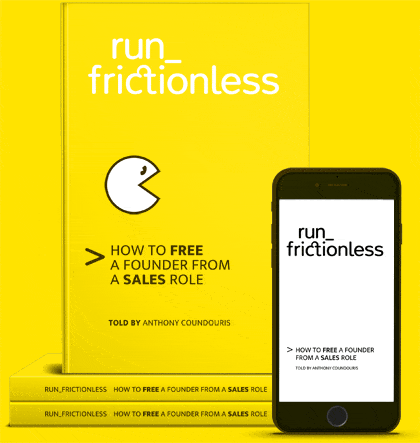
Stop writing beg mail and begin writing value mail
>
Stop writing beg mail and begin writing value mail
Beg, borrow and steal. How low will you go to make a sale? According to our research, up to 70 percent of organizations send their customers beg mail.
Umbrella companies provide shared services to contractors taking assignments from employers. We tested the strength of each competitor’s middle game. We wanted to see what communications competitors would resort to after the first key interactions were over.
For an explanation of the early, middle and endgame, see below.
During the research, 70 percent of competitors fired beg mail to customers in the middle game. Worse still, half of these competitors sent automated beg mail. On day two, four and five of the mystery shop, we received precisely the same script from Zoe, begging for a decision.
What is beg mail?
Spelt beg meil, it is a region of France. The legend goes that the Governor at the time received such an abundance of beg mail from his constituents. So much so, he outlawed the practice and renamed the region beg meil.
Joking! Seriously…
Beg mail is where the salesforce call or messages a customer and beg for a decision. The first of its kind you could call a ‘follow-up’ email. Every email like it thereafter is beg mail.
Effects of beg mail on customers
Beg mail ruins any credibility built in the early game. The more beg mail the salespeople fire at the customer, the more credibility the organization loses.
I have seen salesforce fire bulk beg mail to an entire group of customers. In the click of a button, they assassinate leads from the middle game, killing any chance of an endgame. To make it easier to measure conversions of leads, I like to group customer interactions into an early, middle and endgame.
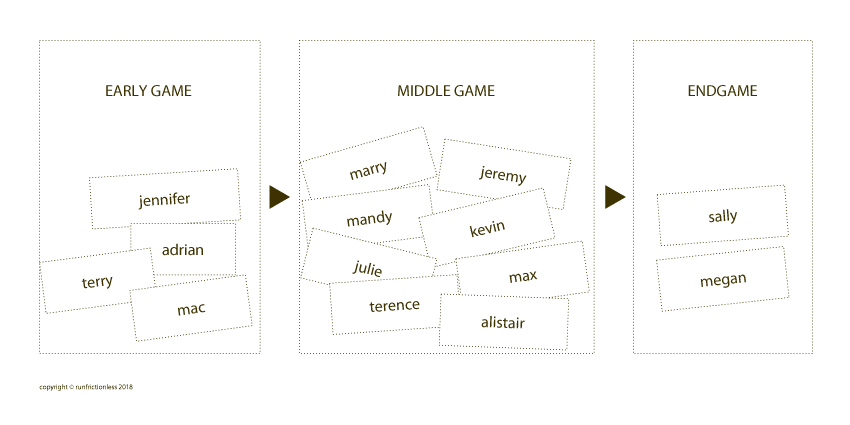
Beg mail commences once the initial consultation has taken place. After successfully making contact, delivering an awesome proposal, quotation or demonstration in the middle game, the salesforce begin pestering the customer with beg mail.
The organization that sends value mail stays top of mind.
They stand out from the pack as being valuable, honest and confident. Competitors bombard the customer with beg mail fade out and become background noise.
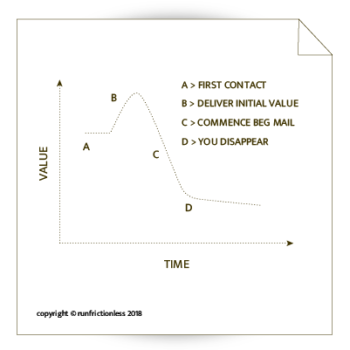
Beg mail is a big problem
Every sales system, no matter how well-designed, presents the customer with friction. Friction slows the customer from reaching their goal, and equally slows the sale.
Beg mail is a source of sales friction.
Friction points are where customers get stuck in a sales system, either because they don’t understand what to do next or what is being demanded of them is too time-consuming. When customers encounter overwhelming friction, they drop-off.
Drop-off is more likely to be avoided when this equation is satisfied: X (perceived product benefits) > Y (customer effort).
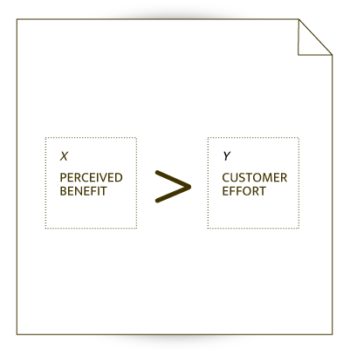
Why salespeople write beg mail
Beg mail is an insidious behavior. If the salespeople haven’t met targets, or lead conversions have been slow that week, beg mail comes knocking. Bruce Scheer, CEO of the popular podcast show Sales Conversation, explains:
It is easy to slip into beg mail. One beg mail, begs another :).
The best sales strategies for startups
The best sales strategies for startups encourage salespeople to avoid sending beg mail. The best sales strategies for startups focus on qualifying leads in the early game and value mail in the middle game.
Pre-qualify leads from the early game
By spending more time carefully qualifying leads in the early game, you can set up individual tracks or journeys through the middle game.
It doesn’t matter if prequalification is done manually by applying tags in crm. Or predictively using event triggers based on customer behavior on the internet, the idea is to gather more intelligence of whom you are serving.
This exercise is best done in the early game, where the customer is more likely to share information about themselves. In the early game, customers expect suppliers will have questions. Salespeople often defer asking qualifying questions until later, preferring to build trust before asking the hard questions.
However, in my experience, it’s better to get the hard questions out of the way first.
As long as your qualifying questions serve the customer’s interest, they are likely to be answered
For example, businesses often want to know if a customer is likely to make a decision shortly. When gathering intel on this datapoint, I can think of two ways to ask the question.
The second question is indirect and in my opinion, more likely to get engagement with a customer. Customers are smart. If they sense they are being profiled by a salesperson, they will skip over the question.
Send value mail in the middle game
This sales strategy is a nice follow on from the previous sales strategy. One of the reasons why 70 percent of competitors fire beg mail at customers, is because the business has designed too few customer interactions. They run out of gas, or value propositions and surrender to beg mail.
Think of ways you can create value for a customer. Here are examples of value mail.
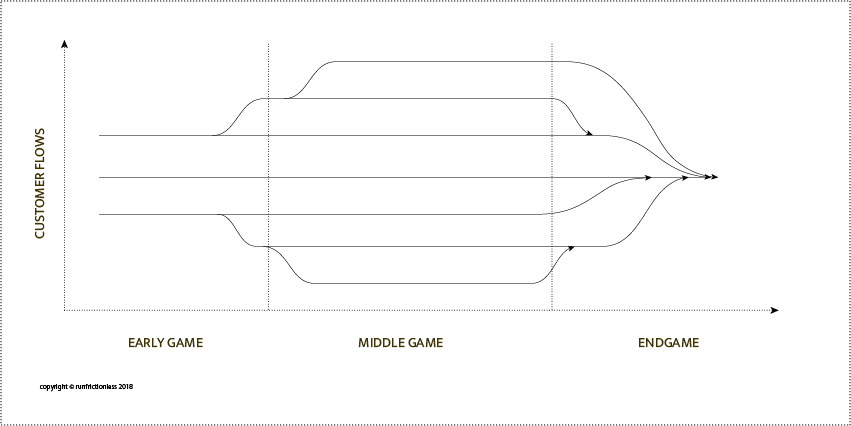
A salesforce that sends value mail have pre-qualified their customer in the early game, and have thickened the middle game. This makes it easier to send targeted communication.
By thickening the middle game, a business creates unique customer journeys. These journeys are sensitive to a customer’s disposition, often optimized to serve a variant rather than an entire profile.
Key takeaways
Learn more
